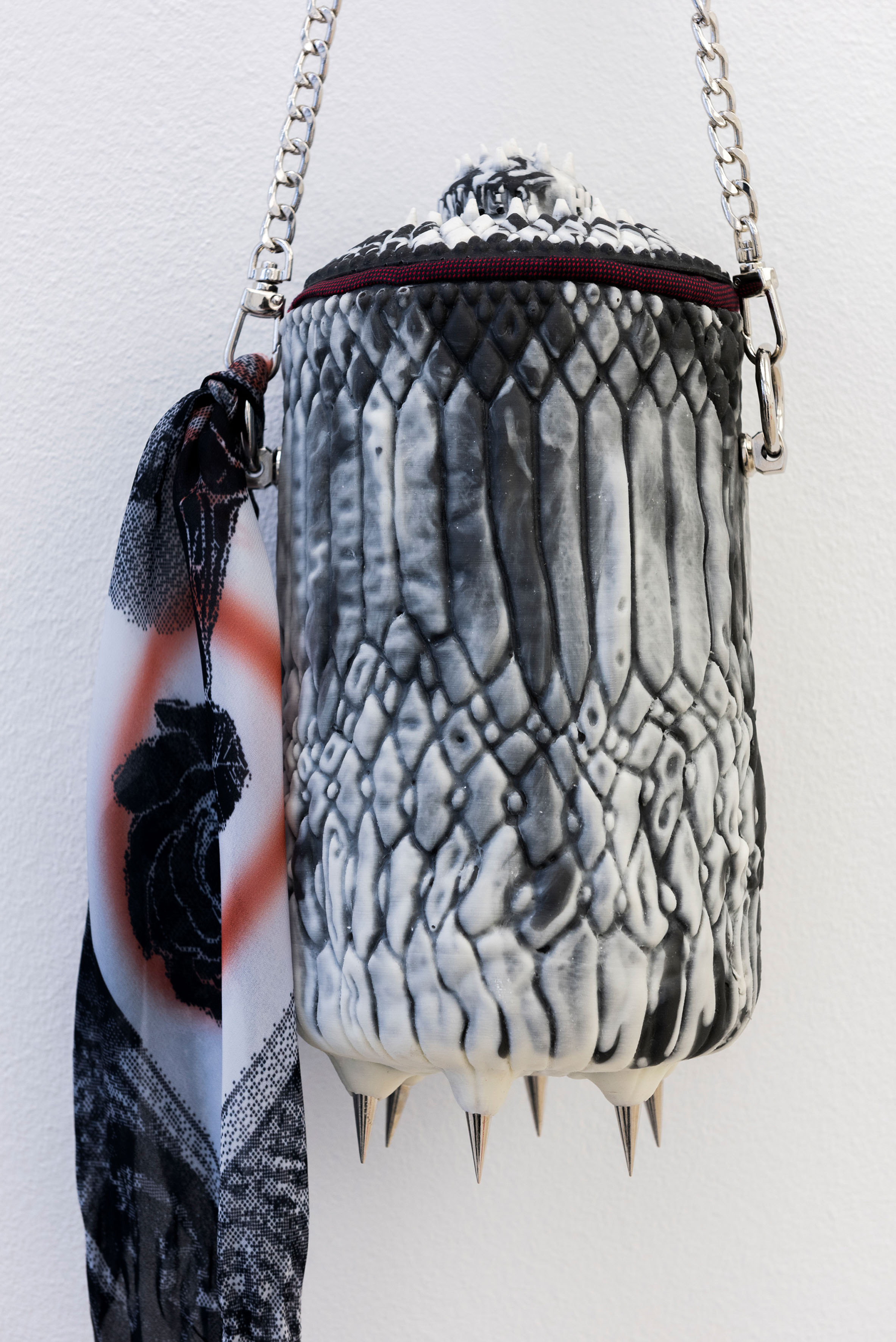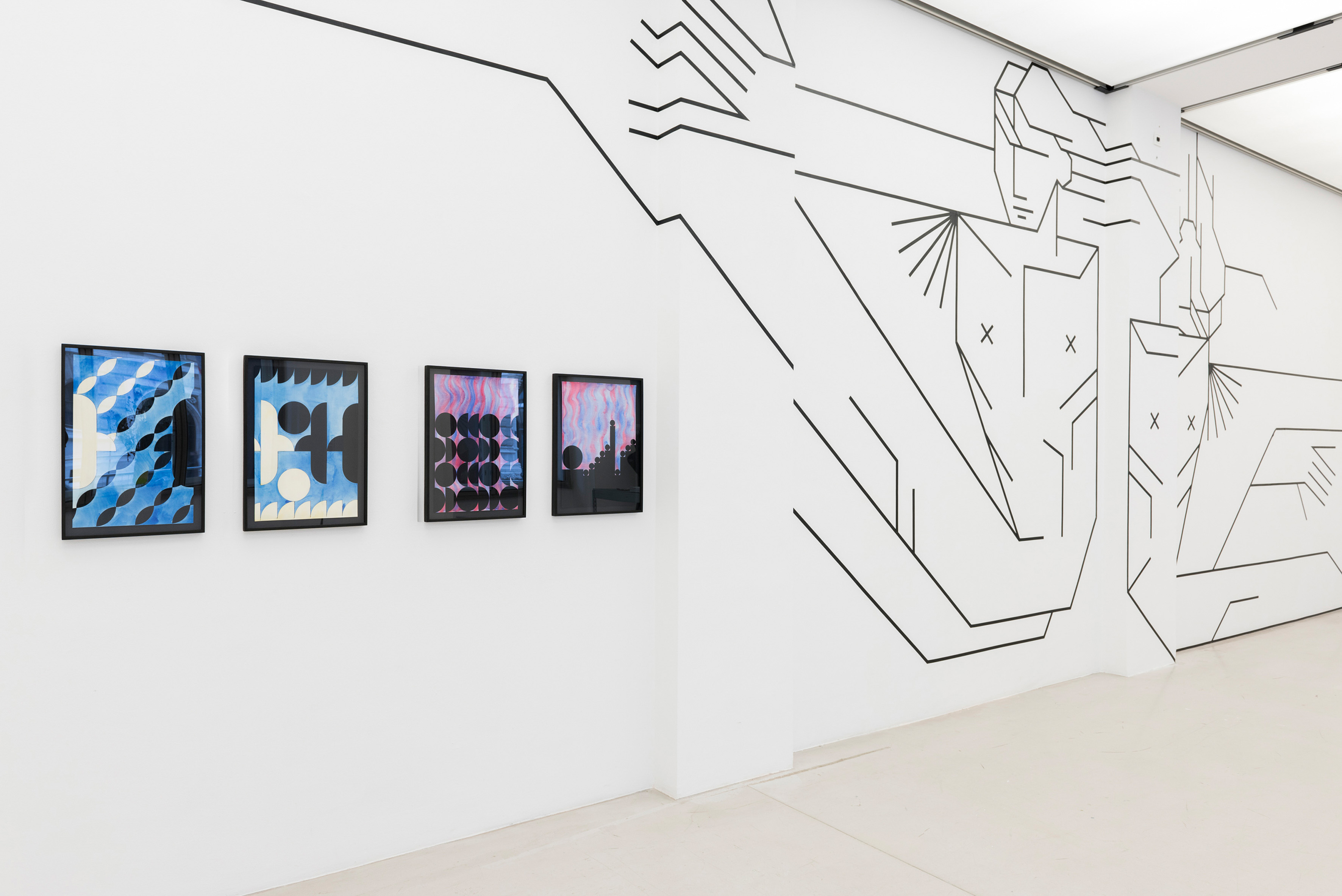YYYYMMDD >>> BACK HOME <<< >>> SELECTED FEATURES <<< >>> HIDDEN ARCHIVE <<<
[20230320]
DISPATCHES FROM A TROUBLED CITY with works by AARON AMAR BHAMRA, DANIELA GRABOSCH, ORDAINED HARDWARE, MARIO KIESENHOFER, GAŠPER KUNŠIČ, ANNA PAUL and EKATERINA SHAPIRO-OBERMAIR at WIEN MUSEUM MUSA STARTGALERIE curated by NIKA KUPYROVA [from 20221201 to 20230326]
[Photos: Lea Sonderegger]






























Every city, whether real or fictional, is multilayered and contradictory, a constant struggle for validation and coexistence. The exhibition draws parallels between daily life in contemporary Vienna and British author China Miévelle’s novel Perdido Street Station set in the fictional city of New Crobuzon. Using an experimental curatorial approach, seven artistic positions are paired associatively with passages from the book.
From the dangers of advancing technology and the conflicts between multifaceted populations, to subcultures and places of refuge for those on the margins of society, each of the artistic positions examines a particular aspect of life shared by the two cities. Through open air markets, industrial quarters and artistic hangouts, the exhibition takes the viewers on a sightseeing tour of urban wonders.
Anna Paul’s works bring together elements of sculpture, social design and performance. They are often found in public spaces, where they participate directly in the rituals of daily life. The first scene of the book Perdido Street Station takes place on the market: it is the first look at the city in its chaos and complexity. As we follow the shopping basket’s journey from the window down to the market vendor and back we are eventually introduced to the novel’s protagonists.
The exhibition shows the market stall that Anna Paul used for a series of events at the Naschmarkt. Supported by the specially made sculptural objects that take inspiration from packaging as well as the products themselves, she sold everyday necessities such as bread, nuts and fruit.
Mario Kiesenhofer‘s photographs offer an insight into queer underground sex scene, darkrooms, gay-clubs and saunas. The photographed spaces are empty and framed behind grey glass that adds a layer of protection to their sensitive subject matter as well as reflects the viewer as if in a mirror.
Remarkably, these indoor safe spaces are reminiscent of urban architecture, of alleys and crevices of the city, which historically have been the sanctuaries of those marginalized by society.
Protagonists of the Perdido Street Station are in a relationship that is in some way unordinary and only partially acceptable to their surroundings. From the chosen paragraph we cannot decipher exactly how their relationship is different, but that is also unimportant. As the characters navigate societal restrictions, they create an image of queerness in public space.
Aaron Amar Bhamra‘s works are subtle interventions that highlight the architectural relationships between the interior spaces. In the exhibition, his work is divided into two parts, and is presented respectively in the foyer of the museum and in the exhibition space itself. Only when visitors have seen both parts of the artwork does its narrative become clear – a fictional device that is both organic and mechanical, proposing a dialogue between between a body and architecture.
The chosen paragraph from the book presents a sudden change of scale: in the city of New Crobuzon, a giant excavated rib cage becomes a part of the city fabric. The whole district is built around the ribcage, while the strange emanations from the unidentified bones disturb the building process, breaking tools, rotting wood, actively shaping the urban architecture as it is being made.
Ordained Hardware is a Vienna-based brand creating on the cross section of art and design with a focus on sustainable materials. Their objects can be described both as accessories and wearable sculptures; they function as organic body extensions and a kind of urban camouflage. Shapes and textures that imitate animal skin, feathers and claws merge into each other, suddenly revealing fully functional elements like a pocket or a key ring.
In Perdido Street Station the theme of hybrids is a dominant one, whether it it is in relation to the city’s hybrid architectural styles, its fantastical inhabitants in which animal and human and mythological features come together or the technology that allows for body modification.
Gašper Kunšič takes inspiration from socialist-realist public art often found in municipal buildings in Vienna as well as in his native Slovenia. The mural he created specially for the exhibition in MUSA features a monumental figurative composition typical for this art genre, but is also influenced by contemporary graphic design, pop culture and the artist’s own characteristic style.
The mural is the biggest artwork in the exhibition and yet the most light, constructed solely from stripes of black textile tape placed directly on the wall. Just like the many fantastical flying creatures of New Crobuzon, it seems to be free of the laws of gravity. Gasper Kunšič’s deliberate use of inexpensive materials adds a sense of fragility and queerness to his subject matter, exploring the artist’s own feelings of national belonging.
Daniela Grabosch’s work series deals with the memories of past nuclear catastrophes. The city of New Crobuzon is powered by many energies, some familiar, some completely foreign: elyctrical, thaumaturgical, chymical. However there is one particular energy source that is always mentioned unwillingly and talked about with apprehension. The narrative around the Torque is hauntingly similar to our own history with nuclear energy.
Hanging sculptures in black vinyl are a reminder of the human-shaped imprints left on the streets of Hiroshima after a nuclear blast. Alien crystal forms carrying with them the smell of ozone are placed in industrial containers in colours usually assigned to unstable, radioactive elements. Scanning the QR codes integrated into the sculptures takes the viewer to an audio piece, based on poetic works about the Chernobyl and Hiroshima events.
In her artistic work, Ekaterina Shapiro-Obermair is interested in the subjects of memory, history and ideology. Inspired by modernism as well as her own personal history, the bold compositional elements of her graphic works explore the narrative of forms and their relation to societal and political structures. The series of works in the exhibition made in watercolour and gouache seem to be both abstract and architectural, two- and three-dimensional.
The appearance of the city is formed by its industry and labour, by its social classes and the cultural backgrounds of its citizens. The shape of the horizon of the fictional city of New Crobuzon and the real city of Vienna reveal a lot about their origins, struggles and self-definition.
[Text: Nika Kupyrova]
©YYYYMMDD All content and design by Daniela Grabosch + Ricardo Almeida Roque unless otherwise stated. Images, Videos and Texts can only be used under permission of the author(s).